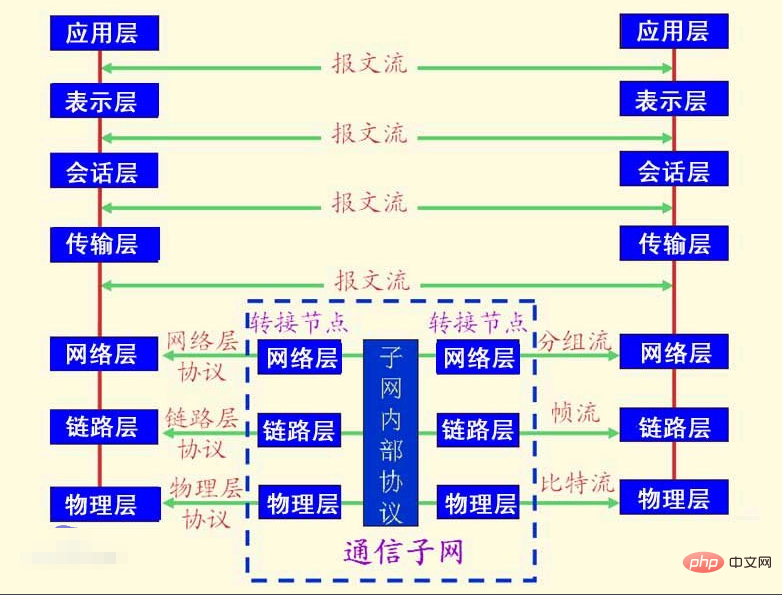Routing is the main function of the network layer in the osi model. The osi model refers to the open system interconnection communication reference model. It is a conceptual model proposed by the International Organization for Standardization. It is a standard framework that attempts to interconnect various computers into networks around the world. OSI divides the computer network architecture into seven layers: physical layer, data link layer, network layer, transport layer, session layer, presentation layer and application layer.

#The operating environment of this article: windows10 system, thinkpad t480 computer.
Routing is the main function of the network layer in the osi model.
What is the osi model
Open System Interconnection Reference Model (English: Open System Interconnection Reference Model, abbreviated as OSI), referred to as The OSI model is a conceptual model proposed by the International Organization for Standardization, a standard framework that attempts to interconnect various computers into networks around the world. Defined in ISO/IEC 7498-1.
The OSI/RM protocol was developed by ISO (International Organization for Standardization). It has three basic functions: providing developers with a necessary, common concept for development and improvement, and can be used to explain the connection of different systems. s frame.
osi model standard defines the seven-layer framework of network interconnection (physical layer, data link layer, network layer, transport layer, session layer, presentation layer and application layer)

OSI divides the computer network architecture into the following seven layers:
Physical layer: Converts data into physical The electronic signals carried by the medium are equivalent to the porters in the post office.
Data link layer: Determines how to access the network medium.
In this layer, the data is framed and flow control is handled. This layer specifies the topology and provides hardware addressing, which is equivalent to the packing and unpacking workers in the post office.
Network layer: Rights-of-use data routing through large networks, equivalent to sorting workers in the post office.
Transport layer: Provides reliable end-to-end connections, equivalent to the letter delivery clerk running the post office in the company.
Session layer: Allows users to establish connections using simple and easy-to-remember names, which is equivalent to the secretary in the company who sends letters, writes envelopes, and opens envelopes.
Presentation layer: negotiates the data exchange format. It is equivalent to the assistant who briefs the boss and writes letters for the boss in the company.
Application layer: The interface between the user's application and the network.
Description:
OSI is a well-defined set of protocol specifications and has many optional parts to accomplish similar tasks. It defines the hierarchical structure of the open system, the interrelationships between the layers and the possible tasks included in each layer, and serves as a framework to coordinate and organize the services provided by each layer.
The OSI reference model does not provide an achievable method, but describes some concepts used to coordinate the development of inter-process communication standards. That is, the OSI reference model is not a standard, but a conceptual framework used in formulating standards.
Recommended: "Programming Video"
The above is the detailed content of Routing is the main function of which layer in the osi model. For more information, please follow other related articles on the PHP Chinese website!